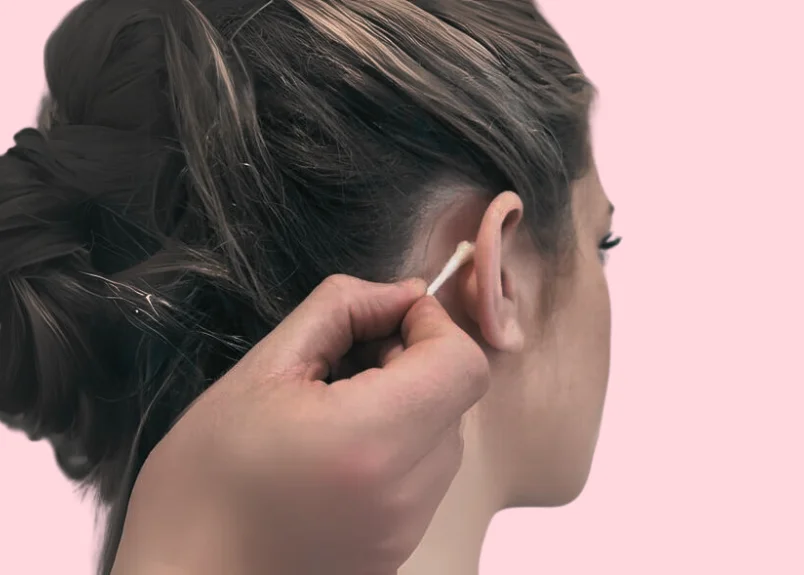How to do a patch test for hair color in 6 easy steps?
At BeautyCaters, our expert team independently curates every recommended product. Purchases through our links may earn us a commission. Explore our transparent selection process.
Thinking about dyeing your hair? Awesome idea! But what if you had a reaction? Worry not girls! Just have the mini trial run for your new ‘do- the patch test. It’s a super easy way to check for allergies before you take the plunge. Let me do one thing, take you on a walk down the lanes of how to do a patch test for hair color at home. So, get ready to flaunt your newly tinted luscious hair carefree and with confidence.

What is a patch test?
A patch test is a preemptive measure before hair dye application. It serves as a safeguard against potential allergic reactions or skin sensitivities to ingredients within the dye. By conducting a small-scale trial on a discreet area of your skin, you can determine if the dye is compatible with your skin. This proactive step is crucial to prevent discomfort or more serious reactions that could arise from using the product on a larger area.
Why should I do a patch test before hair coloring?
While permanent hair dyes are designed to be gentle on hair, they often contain chemicals that can trigger allergic reactions in certain individuals. One such ingredient is PPD (Paraphenylenediamine), which is commonly used to activate color pigments. Even if a dye doesn’t contain PPD, it may contain PTD (toluene-2,5-diamine sulfate), a similar chemical that can cause allergic reactions.
That’s where you need to do a patch test 48 hours prior using the product, every time you color your hair. A patch test is a crucial step in preventing allergic reactions to hair dye. Apply a small amount of the dye to a discreet area of your skin and monitor for any adverse reactions. Allergic reactions can develop over time. It can manifest in various ways, including itchy skin, redness, or even blisters on your scalp. If you experience any of these symptoms during or after the patch test, it’s crucial to avoid using the product.
A patch test is a simple yet essential way to ensure a safe hair coloring experience even if you’ve used the same product before without issue.
How to do a patch test at home?: A step-by-step guide

- Prepare the mixture: Combine a small amount of hair dye formula, activator in a bowl. Ensure the bottles are tightly sealed after use to prevent oxidation.
- Choose a test area: Select a discreet area of skin, such as behind your ear or on your inner arm. Avoid areas with sensitive skin or existing cuts or scrapes.
- Apply the mixture: Use a cotton bud or a cotton wool pad wrapped around a brush to apply a small amount of the mixture behind your ear.
- Wait 48 hours: Leave the mixture on for 48 hours without washing it off. If your skin is normal, there should be no noticeable marks or redness.
- Monitor for reactions: Carefully observe the test area for any signs of an allergic reaction:
- Itching
- Redness
- Swelling
- Blisters
- Burning sensation
- Difficulty breathing
- Interpret results:
- No reaction: If there are no visible signs of irritation after 48 hours, you can proceed with coloring your hair.
- Allergic reaction: If you experience any reaction, wash off the mixture immediately with mild soap and water to prevent further irritation, apply a soothing lotion or cream, such as aloe vera or hydrocortisone, to help alleviate discomfort and reduce inflammation and avoid using the hair dye and contact a healthcare professional for advice as soon as possible.
Remember: Always conduct a patch test before using any new hair dye product to minimize the risk of allergic reactions.
Additional tips:
- Consider a sensitivity test: If you have a history of allergies or sensitive skin, you may want to consult with a dermatologist or allergist before using hair dye. They can provide personalized advice and recommend products that may be less likely to cause reactions.
- Read product labels: Carefully read the labels of hair dye products to identify potential allergens. Some products may contain ingredients that are more likely to cause allergic reactions, such as PPD (Paraphenylenediamine) or PTD (toluene-2,5-diamine sulfate)
Alternative options for hair coloring
Experiencing a reaction to hair dye doesn’t necessarily mean you have to forgo coloring your hair. There are several alternative options to consider:
- Hypoallergenic hair dyes: Explore hair dyes specifically formulated for sensitive skin. These products often contain fewer chemicals and are less likely to cause allergic reactions.
- Professional consultation: Consult with a professional hair colorist who can recommend safe products or perform a more thorough patch test. They may also have expertise in using techniques that minimize the risk of allergic reactions.
Frequently Asked Questions about hair dye patch testing
How to know if you are allergic to hair dye?
If you experience itching, redness, or swelling in or around the test area within 48 hours, it’s likely that you’re allergic to the hair dye.
Where to perform a patch test?
Common test areas include behind the ear, inner arm, or side of the neck. However, applying it behind the ear is recommended to avoid accidental washing off.
Why I must do hair dye patch test 48 hours before hair coloring?
48 hours is the recommended duration for a patch test to accurately determine if you have an allergic reaction.
Can I shower after a patch test?
Yes, you can shower, but avoid washing your hair and the test area to prevent removing the dye.
Do hair dye allergies go away?
Yes, allergies fade over time, making it essential to perform a patch test each time you color your hair.

Final Word: How to do a patch test for hair color?
While it might seem like an extra step, a patch test is not just a precaution, it’s a smart move. It’s like trying on shoes before buying them – you wouldn’t wear a pair that pinches, would you? The same goes for hair dye. A patch test ensures the hair color you choose is right for your hair and health. It saves you from a lot of trouble and discomfort.
So, next time you’re reaching for that hair dye bottle, make sure a patch test is at the top of your to-do list. the patch test is a simple yet effective way to protect yourself from potential harm.










